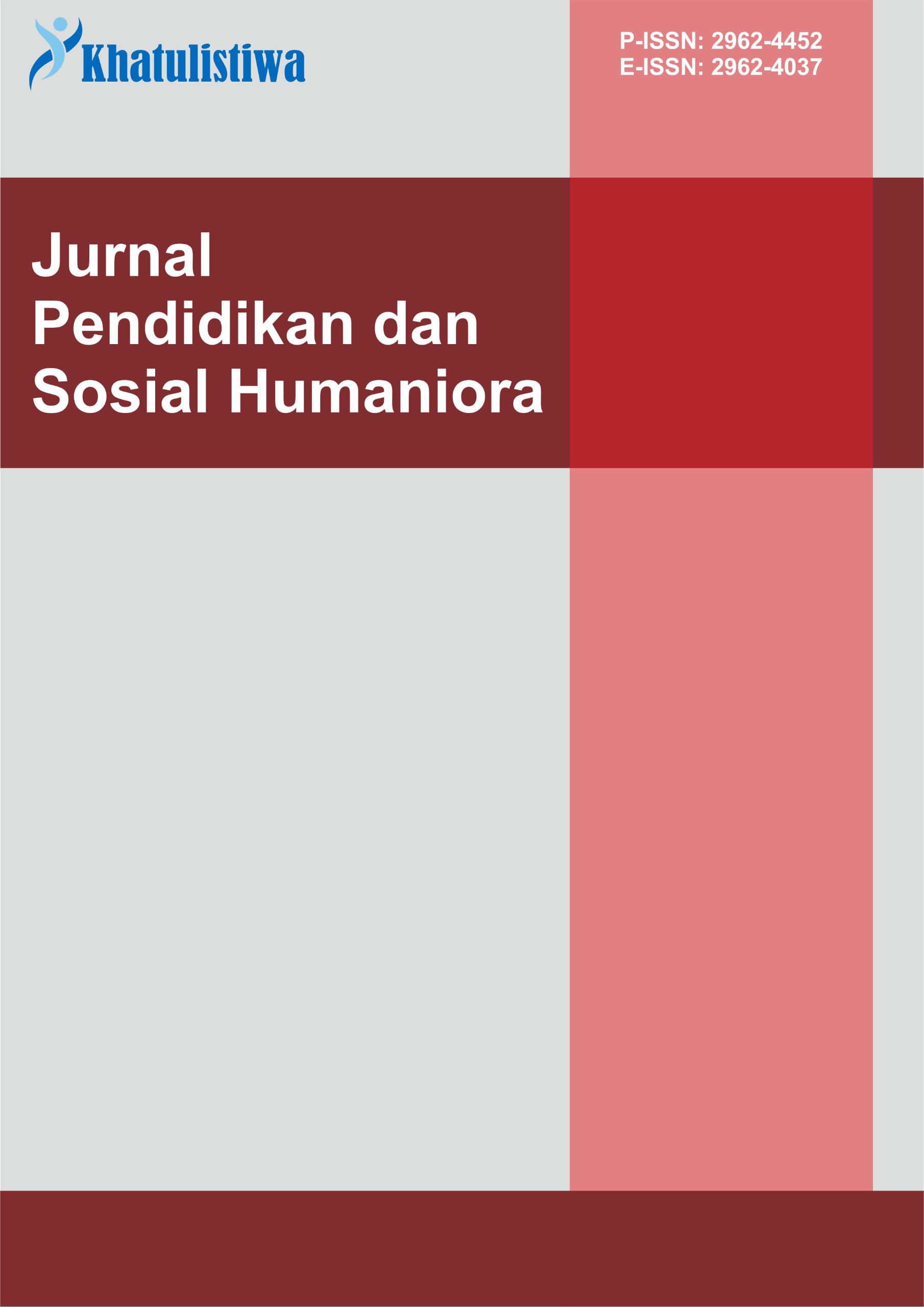A Revenge or a Challenge to Patriarchy? a Feminism Study of Kill Bill Movie
DOI:
https://doi.org/10.55606/khatulistiwa.v5i4.7398Keywords:
Feminis, Gender, Forces of PatriarchyAbstract
This research is intended to advance a more comprehensive understanding of how gender is portrayed in movies and how this medium may be used to investigate and discuss feminist problems. Furthermore, this study may give rise to conversations concerning the significance and influence of patriarchal narratives in a broader societal setting, as well as the part that women play in opposing repressive authorities. Qualitative methods are used, screening the film "A Feminism Study of Kill Bill Movie" through theory. The steps include reading, categorizing, and analyzing the text. No numerical data is required. Conclusions and suggestions are drawn from the research findings. Based on the analysis, it can be concluded that *Kill Bill* serves not only as a narrative of personal revenge but also as a profound feminist statement against patriarchal oppression. Beatrix Kiddo's journey reflects a multifaceted resistance against various forms of gender-based subjugation, including objectification, control over bodily autonomy, and the imposition of traditional gender roles. Through her actions—reclaiming her right to life, motherhood, personal agency, and confronting male authority figures such as Bill—the protagonist symbolizes the overthrow of patriarchal dominance and the assertion of female power and identity. The study reveals that Beatrix's revenge transcends individual retaliation, positioning her as an agent of social and ideological change who challenges the oppressive structures embodied by male characters and institutions in the film. The narrative successfully blends visual symbolism, dialogue, and character development to project a strong feminist discourse, aligning with the principles of empowerment, resistance, and self-determination advocated in feminist theory. Thus, *Kill Bill* can be interpreted as both a personal struggle and a broader feminist rebellion against the systemic forces of patriarchy.
References
Bekers, K., & Willems, G. (2022). The woman writer on film and the #MeToo literary biopic. Adaptation, 15(3), 332–347. https://doi.org/10.1093/adaptation/apab020
Benstead, L. J. (2021). Conceptualizing and measuring patriarchy: The importance of feminist theory. Mediterranean Politics, 26(2), 234–246. https://doi.org/10.1080/13629395.2020.1729627
Boon, S. D., & Yoshimura, S. M. (2020). Revenge as social interaction: Merging social psychological and interpersonal communication approaches to the study of vengeful behavior. Social and Personality Psychology Compass, 14(9), e12554. https://doi.org/10.1111/spc3.12554
Boos, S. (2022). Feminism, theory, film: Critical intersections in the practice and theorization of experimental filmmaking since the 1970s. Konturen, 12, 1–12. https://doi.org/10.5399/uo/konturen.12.0.4912
Buelvas-Baldiris, T., & Rubira-García, R. (2023). Female leadership portraits in commercial movies: Gender social representations from the STEAM sector. VISUAL Review: International Visual Culture Review, 15(4). https://doi.org/10.37467/revvisual.v15.4960
Butler, J. (2022). Selection from Gender trouble: Feminism and the subversion of identity. In The transgender studies reader remix (pp. 191–201). Taylor & Francis. https://doi.org/10.4324/9781003206255-21
Cândido, D. da S. G. (2023). Kill Bill, myths, and archetypes: Psychological and mythological analysis of Quentin Tarantino’s work through C. G. Jung’s theory of archetypes. Cadernos Junguianos, 17, 228–246. https://doi.org/10.4322/1808-5342.2023.202317042
Chen, R., Rochon, M. A., & Anderson, L. C. (2022). “That is terrible news!”: Media framing of Mamba mentality within contemporary U.S. racial and gender politics. Communication and Sport, 10(4), 616–641. https://doi.org/10.1177/21674795211010813
Creed, B. (1993). The monstrous-feminine: Film, feminism, psychoanalysis. Routledge.
De Beauvoir, S. (2014). The second sex. In Classic and contemporary readings in sociology. https://doi.org/10.4324/9781315840154-29
Deng, L., Yang, M., & Xu, Y. (2023). A comparative analysis of the novel and the film of The Joy Luck Club from the perspective of postcolonial feminism. Journal of Education, Humanities and Social Sciences, 18, 150–155. https://doi.org/10.54097/ehss.v18i.10971
DiBlasi, T., & Kassinove, H. (2022). An exploratory analysis of components of revenge experiences. Journal of Aggression, Maltreatment & Trauma, 31(7), 873–887. https://doi.org/10.1080/10926771.2021.2013376
Ellington, T. R. (2024). Subverting gender norms: The role of female anti-heroes in modern action films. Journal of Research in Social Science and Humanities, 3(8), 18–25. https://doi.org/10.56397/jrssh.2024.08.03
Finnegan, J., & Finnegan, J. (2021). The stylisation of violence in film. [Detail penerbit hilang]
Garcia, P. A. (2023). Shakespeare’s Titus Andronicus and the gender of revenge [Unpublished thesis]. Univerzita Karlova, Filozofická fakulta.
Henry, C. (2012). Rape-revenge revisions: Case studies in the contemporary film genre [Master’s thesis, Anglia Ruskin University].
Hooks, B. (2000). Feminism is for everybody: Passionate politics. South End Press.
Manaworapong, P., & Bowen, N. E. J. A. (2022). Language, gender, and patriarchy in Mulan: A diachronic analysis of a Disney princess movie. Humanities and Social Sciences Communications, 9(1). https://doi.org/10.1057/s41599-022-01244-y
Marić, A., & Ćosić, A. (2024). Violence happening for a reason and female masculinisation. Lingua Montenegrina, 34(2), 299–311.
Muhammad, J. (2024). Representation of feminist agenda in Charlie’s Angels (2019) [Undergraduate thesis, Universitas Islam Indonesia Yogyakarta].
Mulvey, L. (1975). Visual pleasure and narrative cinema. Screen, 16(3), 6–18.
Okpokwasili, O. A. (2024). Bell Hooks’ conceptualization of intersectionality and the problem of gender relation in Nigeria. Nnadiebube Journal of Philosophy, 7(2), 153–171.
Pan, L. (2022). The expression of male gaze in film art: Take Kill Bill and The Great Beauty as examples. Journal of Social Science and Humanities, 4(10), 104–106. https://doi.org/10.53469/jssh.2022.4(10).20
Pérez, N. J. (2021). “My baby shot me down”: Gender violence and survival energy in Quentin Tarantino’s Kill Bill (2003, 2004). Psychologist, 24(1). [Nama jurnal kurang jelas—harap dicek]
Pierik, B. (2022). Patriarchal power as a conceptual tool for gender history. Rethinking History, 26(1), 71–92. https://doi.org/10.1080/13642529.2022.2037864
Rawłuszko, M. (2022). Producing feminist solidarities in practice. European Journal of Politics and Gender, 5(3), 382–398. https://doi.org/10.1332/251510821X16558010725771
Salih, S. (2007). On Judith Butler and performativity. In Sexualities and communication in everyday life: A reader (pp. 55–68). Routledge.
Tasker, Y. (1993). Spectacular bodies: Gender, genre and the action cinema. Routledge.
Van Zandt, S. (2021). The triumph of trauma: Tarantino style. Film Matters, 12(2), 111–117. https://doi.org/10.1386/FM_00158_7
Zhang, T. (2024). Reconstruction of gender roles and female self-identity: A case study of the film Kill Bill, 8(September). https://doi.org/10.54254/2753-7080/8/2024098
Downloads
Published
How to Cite
Issue
Section
License
Copyright (c) 2025 Khatulistiwa: Jurnal Pendidikan dan Sosial Humaniora

This work is licensed under a Creative Commons Attribution-ShareAlike 4.0 International License.








